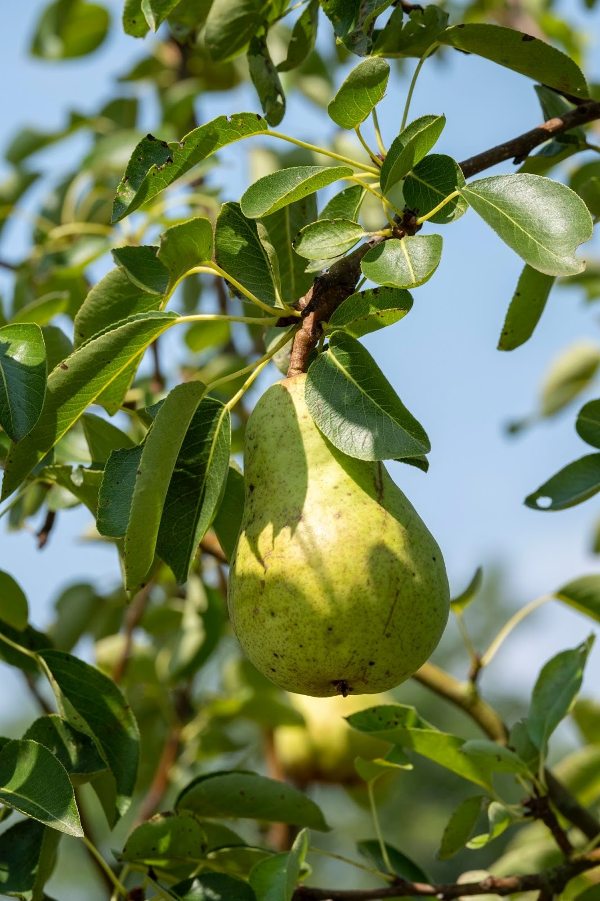This year, I hope to get the first inklings of a fruit orchard going on the property. It won’t be anything spectacular, just 6–10 trees planted in rows with a few more scattered wherever they will fit. I started down the path of an orchardist by planting two pear trees. I did all of my due diligence beforehand. I spent hours poring through books and watching YouTube videos to determine which cultivars would grow best in my region.
I learned about the various fungi and pests that I would have to watch out for once they were planted, and how to treat any sicknesses that might develop. I even checked the farmer’s almanac to determine the perfect time to plant the trees, so they’d have the best opportunity to develop strong roots prior to winter setting in.

Unfortunately, all of my efforts weren’t enough to avoid disaster.
The problem came when I planted the trees. It seemed simple enough. Per the instructions that came with them, all I needed to do was dig a hole, put the trees in, and fill the hole to approximately an inch above the root ball.
However, the instructions did not take the hard packed clay of my region into account. It’s gray and antithetical to life due to poor drainage and a lack of organic matter. So, it’s perfect for pottery, but the farmers who live near me struggle mightily to make a living from it. This is one of the reasons I chose to use raised beds in our garden, but I assumed that fruit trees would be able to survive in it. I was wrong.
Because the clay soil lacks proper drainage, it acted like a plastic bucket when the first rain came after the trees were planted. Water poured into the holes I dug, but wasn’t absorbed into the surrounding clay soil. Instead, it formed tiny lakes around both of my trees with water rising several inches up their trunks. Of course, a little moisture is okay, but being constantly submerged like that would cause root rot and kill my pear trees in the same way that a house plant dies if it’s overwatered.
Once a tree is in the ground, it’s almost impossible to dig it up without killing it. So, my only option was to find a way to create drainage for each tree, so that water wouldn’t be trapped around their roots. The solution I came up with was to dig a French drain that would lead water downhill from each tree. In its simplest form, a French drain is a trench that’s dug into the soil and filled with rocks. French drains are most often used to lead water away from roadways and house foundations where they can cause damage.
I dug a three-meter trench leading away from the root ball of each tree. As I was digging each trench, I could see the water lowering around their tree trunks, so I knew I was on to something, then I went to the hardware store to buy stones. While I was there, I struck up a conversation with a man who was buying gardening supplies. I explained my problem to him, and my proposed solution. He responded that he’d never heard of anything like it, but it seemed like it could work. Then he paused for a beat and said: “Seems like a lot of trouble to keep some trees alive.”
And he was right. It was a lot of trouble—digging trenches, carrying bags of rocks, walking back and forth across a mud-covered lawn. There are more pleasant ways to spend a Saturday. But in that moment, pleasure wasn’t my primary pursuit. I was led by another, higher calling: responsibility. The moment I purchased those trees, I became responsible for their well-being. The moment I planted them incorrectly, I became responsible for fixing the problem. And as long as they’re alive I’ll be responsible for their well-being.
In a way, you could say that I’m a servant of the trees. More than that, I’m a servant to every living thing on this homestead. Each morning, I must wake up and put the needs of my plants and my animals before my own. They eat before I eat. They sleep before I sleep. It couldn’t work any other way. And my reward for all of this is a strong feeling of satisfaction each time I see them living their best lives.
Buddhism also requires us to have a servant mentality. We can’t reach enlightenment, we can’t save all sentient beings from suffering if we’re competing with them. It’s only by stepping down from our high places, and getting in the mud with others that we can help with their problems.
I think that’s why the Buddha didn’t return to the palace after he had realized enlightenment. He knew he couldn’t live in a palace, looking down on people if he wanted to lead them to enlightenment. He had to be on their level. He had to be willing to serve.
Namu Amida Butsu
Related features from BDG
My Buddhist Teacher Wendell Berry
Cultivating Wild: The Miracle of Dharma’s Garden!
For the Earth: Buddhist Environmental Thought and Activism
Can Small Farms Save the World? Part Two: Forest Gardens
We Are the Flowers in the Garden
Right Mindfulness and Vegetable Gardens













Wonderful story, wonderful Dharma. Thanks for sharing…